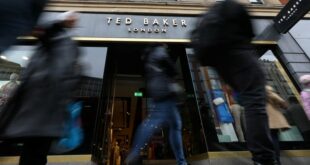But Tiff Macklem sees rates staying high even as prices stabilize and economy retreats
As we've seen in the recent surge in climate disasters, the effect of a gradual increase in temperatures does not necessarily result in a gradual impact on people's daily lives. Nor does it affect people equally.
Wednesday's Monetary Policy Report from the Bank of Canada offered a similar lesson, as the central bank once again warned that the poor and over-borrowed were likely to suffer more from both high inflation and the high borrowing rates needed to bring down stubborn inflation.
While he admitted that the latest quarter-point hike in its key rate to five per cent would hurt many people, Bank of Canada governor Tiff Macklem warned that he remained wary of overshoot — with the possibility that the lagging effects of a long series of interest rate hikes could kick in suddenly and put the economy into reverse.
Unnecessary pain?
"We're trying to balance the risks of under- and over-tightening," Macklem said in answer to a reporter's question at Wednesday's news conference in Ottawa. "If we do more than we need now, it's going to be unnecessarily painful."
Asked repeatedly by reporters why a string of 10 interest rate hikes had not had a stronger impact on inflation, including food and house prices, Macklem and senior deputy governor Carolyn Rogers cited a number of effects, including a housing shortage, a strong labour market and the post-pandemic surge in immigration that recently sent Canada's population to the 40-million mark.
But the other thing that may be "buffering" the effects of higher rates are forces similar to the K-shaped recovery that we saw after the COVID-19 pandemic meltdown. Just as we've seen in recent climate disasters, not everyone is affected the same.
"We deal in a lot of aggregate numbers and averages, but we know that inflation and interest rates affect people very differently," Rogers said. "In particular, we know … that the most vulnerable Canadians are the ones that are hurt most both by inflation and by higher interest rates."
While news stories quite fairly focus on the plight of the worst off, a majority of Canadians remain in financial good shape, she said. And those better-off Canadians are able to keep spending even as prices rise.
"There are two things that are helping buffer many households from both inflation and interest rates, and that is the savings they accumulated over the course of the pandemic. You can see three-quarters of households have accumulated quite a bit more savings than they had prior to the pandemic," Rogers said, citing the Monetary Policy Report (MPR), which contains many interesting graphs and charts.
"The other thing we think is supporting confidence and buffering Canadians from some of the impacts is the strong labour market," she said, adding that people are not afraid of losing their jobs.
Central banks have been wrong
While Macklem and Rogers emphasized the view that we are heading to a slow and smooth soft landing without heading to recession, an MPR outlook is never complete without a mention of the downside risks.
"It's ridiculous to think that a quarter-point rate hike [on Wednesday] would make the difference between starting a recession and avoiding recession," longtime Edmonton financial analyst and author Hilliard MacBeth wrote in a social media post this week.
But of course there are many examples of what we might call the last straw effect, when a final increase in rates or the final rise in global temperatures can lead to a cascade of consequences. The impossible thing to know in advance is when the moment is reached. Certainly both the Bank of Canada and the U.S. Federal Reserve have gotten sudden changes wrong in the past.
Many economists have suggested that central banks around the world have gone too far, too fast in hiking rates and that the well-known lagging effect of previous sharp rate hikes could come all at once.

Bank of Canada raises interest rate to 5% and doesn't rule out more hikes
The Bank of Canada has raised its benchmark interest rate to 5 per cent, saying inflation and excess demand remain stubbornly high. Many Canadians with mortgages are feeling the pain, with some paying double what they did just a few years ago.
Canadian author Malcolm Gladwell wrote a whole book about the concept in The Tipping Point, "that magic moment when an idea, trend or social behaviour crosses a threshold, tips, and spreads like wildfire."
In the climate context, that wording might be disquieting in a year when the hectares burned in Canadian wildfires hit a new "magic moment".
In the Canadian economy, there are a number of negative indicators that could come together to cross a threshold.
Hints of a June slowdown in home sales could be confirmed in Friday's latest real estate data. A sharp fall in U.S. inflation on Wednesday, new rules to cut risk on mortgage extensions and this week's announced decline in sales at Aritzia are potential signs that the economy may be reaching a turning point.
Growing signs of a slowdown
"Increased missed payments on products like credit cards and auto loans are a concern," Rebecca Oakes, vice-president of advanced analytics at Equifax Canada, said in a release of new data last month.
The average interest rate that mortgage holders are paying is still well below what you'd pay if you had to renew now. As each person's renewal comes due, they will have to take money from their consumer spending to debt repayment.
"The impact of the rate hikes were felt in markets (especially bonds) in real time, but the real economy is only just starting to feel the real effects of the tightening of the credit channel," Cullen Roche, a well-known U.S. money manager, said in a social media post.
This week, inflation in China — a country blamed for contributing to global price hikes due to its pandemic industrial shutdowns — fell to zero, with producer prices actually shrinking.
Former Bank of Canada governor Stephen Poloz used to say he had to steer by looking in the rearview mirror.
On Wednesday the current governor said while there may still be more rate hikes ahead and little chance of interest rate cuts, he'll watch the economy meeting by meeting in order to be ready for the unexpected.
ABOUT THE AUTHOR

Business columnist
Based in Toronto, Don Pittis is a business columnist and senior producer for CBC News. Previously, he was a forest firefighter, and a ranger in Canada's High Arctic islands. After moving into journalism, he was principal business reporter for Radio Television Hong Kong before the handover to China. He has produced and reported for the CBC in Saskatchewan and Toronto and the BBC in London.
*****
Credit belongs to : www.cbc.ca
 Atin Ito First Filipino Community Newspaper in Ontario
Atin Ito First Filipino Community Newspaper in Ontario






